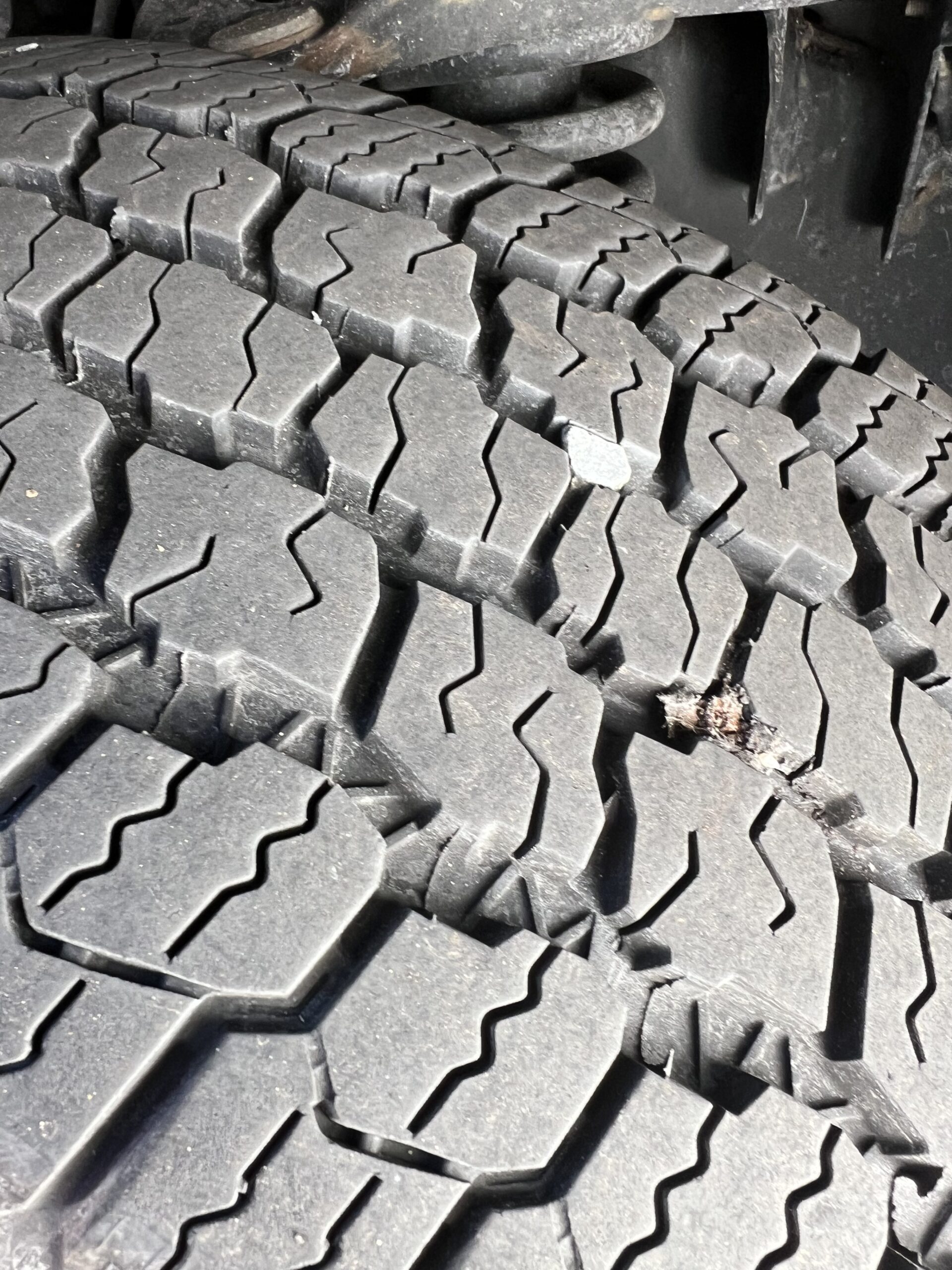The tire inflation symbol, often recognized as the TPMS (Tire Pressure Monitoring System) warning light, is a crucial indicator on your vehicle’s dashboard. It serves as an alert mechanism to inform you when one or more of your tires are significantly under-inflated. Understanding this symbol is key to maintaining your vehicle’s performance and safety.
When the TPMS light illuminates, it’s usually a sign that your tire pressure has fallen below the recommended level set by the manufacturer. Driving with under-inflated tires can be risky, leading to poor handling, reduced fuel efficiency, and increased tire wear. Moreover, under-inflated tires generate more heat, which can cause tire failure and potentially lead to accidents.
It’s essential to recognize that the TPMS light does not specify which tire is under-inflated, nor does it indicate how low the pressure is. Hence, regular tire inspections and maintenance are necessary. By keeping your tires properly inflated, you not only ensure your safety but also enhance your vehicle’s fuel efficiency and prolong tire life.
To effectively stop the tire inflation symbol from appearing, consider professional tire inflation services. At Fuel & Tire Saver Systems Company, LLC, we offer mobile onsite nitrogen tire inflation across Virginia, Maryland, Pennsylvania, North Carolina, Tennessee, and Georgia. Nitrogen inflation helps maintain consistent tire pressure for a longer period, reducing the chances of the TPMS light turning on.
Request Fleet Pricing, complete the website form, or contact our office at (703) 429-0382, or email Mike.LoPresti@fuelandtiresaver.com for more information.
Table of Contents
ToggleCommon Causes of Tire Inflation Symbol
When the tire inflation symbol lights up on your dashboard, it’s crucial to understand the common causes behind it. Identifying these causes can help you take preventive measures and maintain optimal tire pressure.
1. Temperature Changes: One of the most common reasons for the tire inflation symbol to appear is temperature fluctuation. Cold weather can cause the air inside the tires to contract, reducing tire pressure. Conversely, hot weather can expand the air, sometimes causing over-inflation.
2. Slow Leaks: Tires can develop slow leaks due to punctures from nails, screws, or other sharp objects. These leaks might not be immediately noticeable but can gradually reduce tire pressure, triggering the TPMS light.
3. Faulty TPMS Sensors: Sometimes, the issue lies not with the tires but with the TPMS sensors themselves. These sensors can fail or malfunction, providing inaccurate readings and causing the warning light to activate unnecessarily.
4. Improper Tire Inflation: Failing to inflate your tires to the manufacturer’s recommended pressure can also cause the tire inflation symbol to appear. Over-inflated or under-inflated tires can both trigger the TPMS light.
5. Natural Air Loss: Tires naturally lose air over time, even without a puncture or damage. Regularly checking and maintaining your tire pressure can help prevent the warning light from coming on.
Understanding these common causes can equip you with the knowledge to maintain your tires better and avoid the inconvenience and potential hazards of driving with improperly inflated tires. Regular inspections and prompt attention to the TPMS light are essential for vehicle safety and performance.
Importance of Proper Tire Inflation

Maintaining proper tire inflation is essential for several reasons, impacting not just the vehicle’s performance but also safety, fuel efficiency, and environmental sustainability.
1. Enhanced Safety: Properly inflated tires significantly improve vehicle handling and stability. Under-inflated tires can cause reduced traction, leading to longer stopping distances and an increased risk of skidding. Over-inflated tires, on the other hand, can be more prone to blowouts, especially at high speeds.
2. Improved Fuel Efficiency: Tires that are not inflated to the recommended levels create more rolling resistance, which forces the engine to work harder and consume more fuel. According to the Department of Energy, maintaining proper tire pressure can improve gas mileage by up to 10%. This might seem small, but it adds up over time and can result in significant fuel savings.
3. Extended Tire Life: Tires that are kept at the correct pressure wear more evenly. Uneven wear can result from both under-inflation and over-inflation, leading to premature tire replacement. With proper inflation, tires can last longer, saving you money in the long run.
4. Environmental Benefits: Proper tire inflation is not only good for your wallet but also for the environment. By improving fuel efficiency, you reduce your vehicle’s carbon footprint. Additionally, longer tire life means fewer tires end up in landfills, contributing to environmental sustainability.
Understanding the importance of proper tire inflation highlights why regular tire maintenance should be a priority for every vehicle owner. Simple actions like checking tire pressure monthly and before long trips can make a significant difference in your vehicle’s performance and safety.
Steps to Maintain Correct Tire Pressure

Maintaining correct tire pressure is not just a one-time activity; it requires regular attention and a few simple steps to ensure your tires are always at their best. Here’s a comprehensive guide to help you keep your tire pressure in check:
1. Know the Recommended Pressure: First and foremost, it’s crucial to know the manufacturer’s recommended tire pressure for your vehicle. You can typically find this information in your vehicle’s owner manual or on a sticker located on the driver’s side door jamb.
2. Use a Reliable Tire Pressure Gauge: Invest in a high-quality tire pressure gauge. Digital gauges are often more accurate and easier to read than their analog counterparts. Make it a habit to check your tire pressure at least once a month and before long trips.
3. Check Tires When Cold: Tire pressure should be checked when the tires are cold, ideally before the vehicle has been driven or after it has been parked for at least three hours. This ensures an accurate reading, as driving heats up the tires and can increase the pressure.
4. Adjust to the Recommended Pressure: If you find that your tire pressure is too low or too high, adjust it accordingly. Most gas stations have air pumps where you can add or release air. Always follow the manufacturer’s recommended pressure levels.
5. Inspect for Leaks and Damages: While checking tire pressure, inspect your tires for any signs of wear, damage, or punctures. If you notice anything unusual, it’s best to have it checked by a professional to avoid unexpected issues.
6. Consider Nitrogen Inflation: Nitrogen-inflated tires tend to maintain pressure longer than those inflated with regular air. Nitrogen molecules are larger and less likely to permeate through the rubber, making it a viable option for those looking to minimize tire pressure loss.
By following these steps to maintain correct tire pressure, you can ensure your vehicle runs efficiently, safely, and smoothly. Regular maintenance not only enhances your driving experience but also extends the life of your tires, ultimately saving you time and money.
Benefits of Regular Tire Inspections

Regular tire inspections are paramount for maintaining vehicle safety, enhancing performance, and extending the life of your tires. Here are some key benefits of incorporating regular tire inspections into your maintenance routine:
1. Enhanced Safety: Consistent tire inspections help identify issues such as tread wear, punctures, or sidewall damage before they become severe problems. By catching these issues early, you can prevent blowouts and other tire-related accidents that could put you and other road users at risk.
2. Improved Fuel Efficiency: Properly inflated and well-maintained tires reduce rolling resistance, which can lead to better fuel efficiency. Underinflated tires can cause your engine to work harder, consuming more fuel. Regular inspections ensure that your tires are always at the optimal pressure, helping you save on fuel costs.
3. Extended Tire Life: Addressing minor issues such as uneven tread wear or embedded objects during regular inspections can significantly extend the life of your tires. This means fewer replacements and more savings in the long run.
4. Better Handling and Performance: Well-maintained tires provide better traction, handling, and braking performance. This is especially important in adverse weather conditions. Regular inspections help ensure that your tires are in peak condition, contributing to a smoother and safer driving experience.
5. Cost Savings: Identifying and addressing tire issues early can save you money on costly repairs or replacements. Moreover, properly inflated tires reduce wear and tear on other vehicle components, further cutting down on maintenance expenses.
6. Environmental Benefits: Regular tire maintenance can have a positive impact on the environment. Properly inflated tires reduce fuel consumption, thereby lowering carbon emissions. Additionally, extending the life of your tires means fewer tires end up in landfills, contributing to a more sustainable environment.
Incorporating regular tire inspections into your vehicle maintenance routine is a simple yet highly effective way to ensure safety, performance, and cost savings. By making this a habit, you can enjoy a more efficient and reliable driving experience while contributing to a healthier environment.
How Nitrogen Inflation Helps Prevent the Symbol

Using nitrogen instead of regular air for tire inflation can play a significant role in preventing the tire inflation symbol from appearing on your dashboard. Nitrogen inflation offers several advantages that contribute to maintaining optimal tire pressure and overall vehicle performance.
1. Reduced Pressure Fluctuations: One of the key benefits of nitrogen inflation is its ability to reduce pressure fluctuations. Regular air contains moisture, which can expand and contract with temperature changes, causing your tire pressure to vary. Nitrogen, being a dry gas, significantly minimizes these fluctuations, helping to maintain consistent tire pressure.
2. Slower Pressure Loss: Nitrogen molecules are larger than oxygen molecules, making them less likely to permeate through the rubber of your tires. This results in slower pressure loss over time compared to tires inflated with regular air. With more stable tire pressure, you are less likely to see the tire inflation symbol light up on your dashboard.
3. Enhanced Tire Life: Nitrogen inflation helps maintain the correct pressure for longer periods, reducing uneven tread wear and extending the life of your tires. This means fewer replacements and more savings in the long run.
4. Improved Fuel Efficiency: Properly inflated tires reduce rolling resistance, which can lead to better fuel efficiency. Nitrogen inflation helps ensure that your tires are always at the optimal pressure, contributing to reduced fuel consumption and lower emissions.
5. Environmental Benefits: By maintaining optimal tire pressure, nitrogen inflation can contribute to a reduction in carbon emissions. Additionally, extending the life of your tires means fewer tires end up in landfills, supporting a more sustainable environment.
By choosing nitrogen inflation, you can enjoy a range of benefits that help prevent the tire inflation symbol from appearing on your dashboard. This proactive approach not only enhances your vehicle’s performance but also contributes to cost savings and environmental sustainability.
Ready to experience the benefits of nitrogen inflation for your fleet? Request Fleet Pricing, complete the website form, or contact our office at (703) 429-0382 or email Mike.LoPresti@fuelandtiresaver.com.


